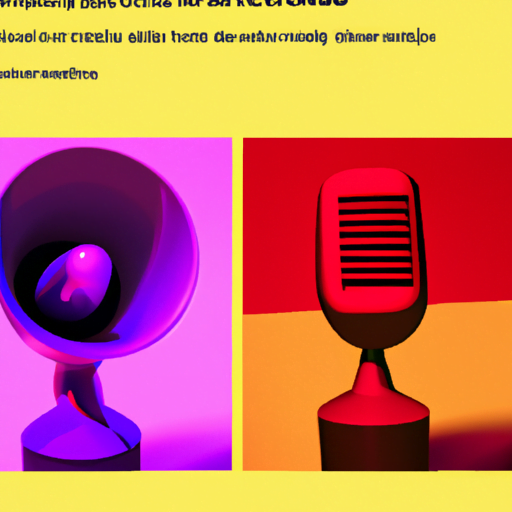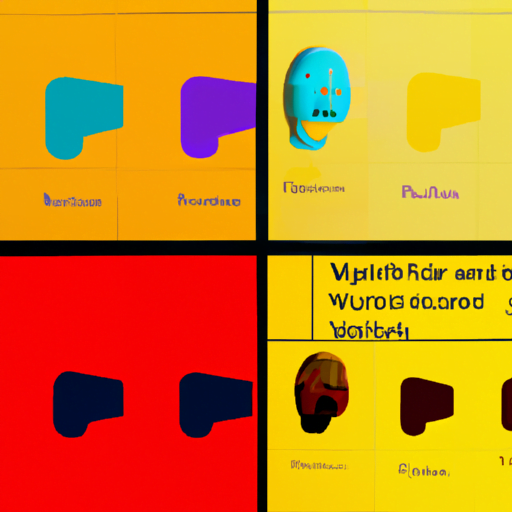
-
Table of Contents
Designing for Voice User Interfaces (VUI) and Chatbots

In recent years, voice user interfaces (VUI) and chatbots have gained significant popularity and have become an integral part of our daily lives. From virtual assistants like Siri and Alexa to customer service chatbots on websites, these technologies are revolutionizing the way we interact with computers and devices. Designing for VUI and chatbots requires a unique approach that takes into account the limitations and capabilities of these interfaces. In this article, we will explore the key principles and best practices for designing effective VUI and chatbot experiences.
The Rise of Voice User Interfaces and Chatbots
Voice user interfaces and chatbots have seen a rapid rise in popularity due to advancements in natural language processing (NLP) and machine learning. These technologies have made it possible for computers to understand and respond to human speech, enabling a more intuitive and conversational interaction.
According to a report by Grand View Research, the global voice recognition market is expected to reach $31.82 billion by 2025, growing at a CAGR of 17.2% from 2018 to 2025. This growth is driven by the increasing adoption of voice assistants in smartphones, smart speakers, and other devices.
Understanding the User
When designing for VUI and chatbots, it is crucial to understand the needs and expectations of the users. Unlike traditional graphical user interfaces (GUI), VUI and chatbots rely solely on voice or text-based interactions. This means that designers need to consider the following factors:
- Context: Users may interact with VUI and chatbots in various contexts, such as in their homes, cars, or public spaces. Designers should consider the environment in which the interaction takes place and adapt the interface accordingly.
- Language and Tone: VUI and chatbots should be designed to understand and respond to natural language. The tone of the interface should be conversational and friendly, creating a sense of trust and empathy.
- Accessibility: Designers should ensure that VUI and chatbots are accessible to users with disabilities. This includes providing alternative input methods for users who cannot speak or hear.
Designing Conversational Experiences
One of the key challenges in designing for VUI and chatbots is creating a conversational experience that feels natural and engaging. Here are some best practices to consider:
- Clear and Concise Responses: VUI and chatbots should provide clear and concise responses to user queries. Long-winded or ambiguous responses can lead to user frustration and confusion.
- Personalization: Tailoring the responses and interactions to the user’s preferences and history can create a more personalized and engaging experience. For example, a chatbot on an e-commerce website can recommend products based on the user’s browsing history.
- Guided Conversations: Designers should guide users through the conversation by providing prompts and suggestions. This helps users understand the available options and prevents them from getting stuck.
- Error Handling: VUI and chatbots should be designed to handle errors gracefully. Instead of displaying generic error messages, the interface should provide helpful suggestions or ask clarifying questions to resolve the issue.
Visual Design Considerations
Although VUI and chatbots primarily rely on voice or text-based interactions, visual design still plays a crucial role in enhancing the user experience. Here are some visual design considerations:
- Branding: VUI and chatbots should reflect the brand’s personality and values through visual elements such as colors, typography, and icons.
- Visual Feedback: Providing visual feedback, such as animated icons or progress indicators, can help users understand that the interface is processing their request.
- Visual Hierarchy: Designers should use visual cues, such as font size and color, to indicate the importance and hierarchy of information.
- Consistency: Maintaining visual consistency across different touchpoints, such as mobile apps and smart speakers, helps users recognize and understand the interface more easily.
Testing and Iteration
Designing for VUI and chatbots requires continuous testing and iteration to ensure a seamless user experience. Here are some testing methods to consider:
- User Testing: Conducting user testing sessions with representative users can help identify usability issues and gather feedback for improvement.
- Wizard of Oz Testing: In the early stages of development, designers can simulate the chatbot’s responses manually to gather insights and refine the conversation flow.
- Analytics: Monitoring user interactions and analyzing data can provide valuable insights into user behavior and help identify areas for improvement.
Case Studies
Let’s take a look at two successful examples of VUI and chatbot design:
1. Amazon Alexa
Amazon Alexa is one of the most popular voice assistants available today. It has a conversational interface that understands natural language and can perform a wide range of tasks, from playing music to controlling smart home devices. Alexa’s success can be attributed to its ability to understand user intent accurately and provide relevant and helpful responses.
2. Duolingo Chatbots
Duolingo, a language learning platform, uses chatbots to provide conversational practice to its users. The chatbots simulate real-life conversations and provide instant feedback on pronunciation and grammar. This interactive and personalized approach has made language learning more engaging and effective for millions of users.
Summary
Designing for voice user interfaces (VUI) and chatbots requires a unique approach that takes into account the limitations and capabilities of these interfaces. Understanding the user, designing conversational experiences, considering visual design, and testing and iteration are key principles for creating effective VUI and chatbot experiences. By following these best practices and learning from successful case studies, designers can create intuitive and engaging interfaces that enhance the user experience in the age of voice and chatbot technology.
